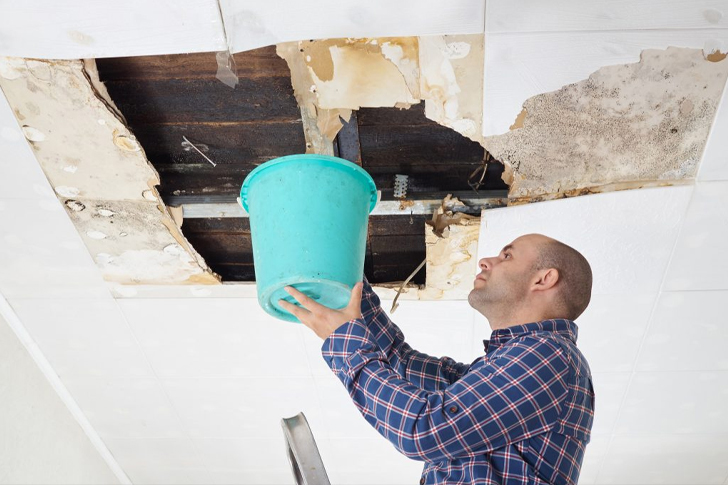Variations in Water Damage Repair Costs in 2023
The cost of water damage repair can vary significantly depending on several factors, from the type and extent of damage to the location and timing of the repairs. In 2023, understanding these variables is crucial for homeowners and property managers when budgeting for potential repairs or assessing existing damage. This article explores the various aspects that influence the costs related to water damage repair, offering a comprehensive guide for those who need it.

Understanding Water Damage
Water damage can occur from various sources such as flooding, leaks, and humidity, which can detrimentally affect building materials and personal property. The extent of damage can range from minor moisture issues to complete structural destruction. Typically, the type of water causing the damage is categorized into three types: clean water, greywater, and blackwater, each varying in contamination levels and posing different risks and cost implications for remediation.
Extent of Damage and Its Impact on Costs
The extent of the water damage significantly affects repair costs. Generally, the earlier the water is removed and the area dried, the lower the overall repair costs will be. Minor damages, such as a leaky faucet that affects a small area, can sometimes be handled for a few hundred dollars. In contrast, significant incidents like a house flood can extend into tens of thousands. For instance, drying out a space might cost between $1,200 and $5,000, whereas complete restoration of a flooded house could easily climb to $20,000 or more, depending on the severity and duration of the saturation.
Local Market Rates
Different regions have varying rates for labor and materials, reflecting the local cost of living and availability of services. For example, water damage repair costs in urban areas like New York or San Francisco are generally higher than in rural locations. Labor costs can range broadly, from $70 to $200 per hour, impacting the overall expenses considerably. This regional variation underscores the necessity for obtaining multiple quotes from local contractors to ensure competitive pricing.
Types of Water Involved
The type of water involved in the damage influences remediation costs due to the differing sanitization and safety procedures required. Clean water damages are the least costly to repair as they do not involve hazardous contaminants. Greywater, from appliances like dishwashers or washing machines, contains some impurities, and thus, requires additional measures, raising costs. The most expensive is blackwater, which comes from sources like sewage or serious flooding, containing harmful bacteria and fungi, necessitating extensive cleanup procedures and even structural repairs.
Structural and Material Factors
The types of materials affected by water damage also play a crucial role in determining the repair costs. Absorbent materials such as carpets, wood, and drywall, may require complete replacement, whereas less porous materials, like concrete, can often be restored with less effort and expense. Historical or specialty materials can be particularly expensive to repair or replace, significantly increasing the project’s cost. A professional assessment can help in deciding whether restoration or replacement is more cost-effective in the long run.
Additional Costs and Considerations
There are often hidden costs associated with water damage, such as mold remediation, which can be both costly and essential for maintaining a healthy indoor environment. Early mold detection and removal are critical, as mold can spread rapidly throughout a property. If not addressed promptly, mold remediation alone can add thousands of dollars to the repair bill. Furthermore, depending on the extent of the water damage, there could be structural weakening that needs to be addressed to ensure the property’s safety.
Insurance and Water Damage
One of the critical elements in managing water damage costs is understanding what expenses your insurance will cover. Standard homeowner policies generally cover damages that are sudden and accidental. However, they typically do not cover damages due to negligence or gradual leaks that could have been avoided with maintenance. Flood damage is almost universally excluded from standard policies and requires separate flood insurance. Prompt communication with your insurer and accurate documentation of the damage and repair processes are vital to facilitating a smooth claims process.
Preventive Measures and Long-term Savings
Investing in preventive measures can significantly reduce the potential costs associated with water damage. Regular maintenance of plumbing systems, proper sealing of basements and crawlspaces, and installation of water detection systems can help avoid extensive damage. These systems, while requiring an upfront investment, can offer considerable savings by preventing larger, more expensive repairs down the line. Furthermore, using water-resistant materials in areas prone to moisture can mitigate potential damage and add to long-term savings.
Conclusion
Water damage repair costs in 2023 are influenced by various factors, including the type and extent of damage, local economic conditions, and the materials affected. By understanding these factors and investing in preventive measures, property owners can better manage and budget for the costs associated with water damage. Furthermore, thoroughly assessing the extent of damage and consulting with insurance can ensure that repairs are handled efficiently and economically.







Recent Comments